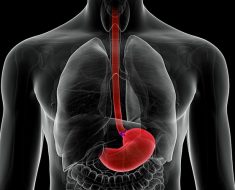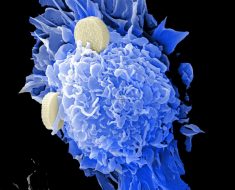
Individuals who experience migraines are prone to a brain energy deficit between attacks, whether through increased demand or inadequate energy production according to a new analysis which finds that an energy impairment may cause brain oxidative stress, triggering a migraine as a protective response.
This analysis sheds light on why migraines occur and helps explain how a migraine aura is kindled and propagates, and why migraines tend to improve as individuals age according to Jonathan Borkum, an adjunct associate professor of psychology at the University of Maine.
Borkum’s analysis, which was published as a review article in the journal Neurochemical Research, characterizes migraines as a homeostatic response set in motion by oxidant-sensing switches in the body that extrapolate individual neuronal metabolism to the entire brain.
When brain energy is inadequate, overproduction of oxidants, which are mild toxins, is stimulated. Borkum hypothesizes that oxidant buildup alerts the brain to the energy imbalance, and elicits the migraine attack as a corrective response. While brain energy deficits have been observed in individuals prone to migraine, the mechanism that triggers an attack based on energy imbalance in the brain was not previously understood.
According to Borkum, the human brain balances the level of antioxidant defense with the amount of energy produced and vice versa, to create a tightly regulated cycle that maintains energy production and cellular redox potential in a narrow optimal range. The oxidative stress created by the energy imbalance associated with migraine threatens neuronal viability in the short term and is suspected as a cause of neurodegenerative disease in the long term.
Borkum demonstrates that energy deficiency, whether resulting from increased energy demand in a hyperexcitable brain or decreased energy supply from mitochondrial impairment, creates oxidative stress as an inherent feature of cellular metabolism. This stress induces migraines in susceptible individuals via oxidant-sensing ion channels in the pain receptors sited in the membrane that covers the brain.
The brain’s response to migraine attacks includes reducing brain energy demands, increasing mitochondrial biogenesis, suppressing apoptosis, releasing varied growth factors, stimulating neurogenesis, reducing the production of reactive oxidative species and raising the level of antioxidant defense. These protective mechanisms, which seek to balance energy production and demand in the brain, suggest that the migraine attack is itself a corrective process initiated to protect the brain from oxidative stress and energy imbalance.
Source: Read Full Article





